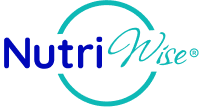Maintaining good health is a paramount concern for individuals across the globe. A well-balanced diet is crucial in achieving health goals and promoting overall well-being.
Two essential nutrients that can significantly impact our health are fiber and protein. Incorporating a high fiber and high protein diet plan into our daily routine can lead to numerous health benefits, from improved digestion and weight management to reduced risk of chronic diseases.
This article will explore the significance of fiber and protein in our diets, their health benefits, and practical tips to incorporate them into our daily meals effectively.
1: The Importance of Fiber in the Diet
Fiber is a type of carbohydrate that our bodies cannot digest. It is found primarily in plant-based foods, such as fruits, vegetables, whole grains, legumes, nuts, and seeds.
Despite not providing calories, fiber is crucial in maintaining good health. There are two types of dietary fiber - soluble and insoluble - and both are vital for our well-being.
2: Improved Digestive Health
Soluble fiber absorbs water in the intestines, forming a gel-like substance that softens stools and helps prevent constipation. Insoluble fiber, on the other hand, adds bulk to the stool, promoting regular bowel movements and preventing issues like hemorrhoids and diverticular disease.
3: Blood Sugar Management
Fiber helps slow down the absorption of sugar, leading to better blood sugar control. This benefit is particularly important for individuals with diabetes or those at risk of developing it.
4: Weight Management
High-fiber foods are typically low in calories and take longer to chew, promoting a feeling of fullness and reducing overall food intake. This can be beneficial for weight management and weight loss efforts.
5: Cardiovascular Health
A fiber-rich diet can help reduce cholesterol levels, specifically, LDL cholesterol (the "bad" cholesterol), lowering the risk of heart disease and stroke.
6: The Importance of Protein in the Diet
Protein is an essential macronutrient that is fundamental to numerous bodily functions. It comprises amino acids, the building blocks of our body's tissues, including muscles, bones, skin, and enzymes.
7: Muscle Building and Repair
Protein is vital for muscle growth and repair, particularly for athletes, individuals engaged in regular physical activity, and those recovering from injuries.
8: Metabolism and Weight Management
Protein has a higher thermic effect than carbohydrates or fats, meaning the body burns more calories during digestion and absorption. Including protein in meals can help increase metabolism and promote weight management.
9: Satiety
A protein diet plan helps promote feelings of fullness and reduce hunger, making it easier to control food intake and avoid overeating.
10: Immune Function
Amino acids from protein sources are essential for a well-functioning immune system, helping to produce antibodies and support immune responses.
11: Designing a High Fiber and High Protein Diet Plan
Creating a high-protein meal plan with high fiber and protein can be enjoyable and fulfilling. The key is to incorporate a variety of nutrient-rich foods into your meals. Here's how to achieve it:
12: Emphasize Plant-Based Foods
Incorporate a wide range of fruits, vegetables, whole grains, legumes, nuts, and seeds into your diet. These foods are naturally high in fiber and provide a good amount of protein.
12: Include Lean Protein Sources
Choose lean protein sources such as poultry, fish, tofu, tempeh, beans, lentils, and low-fat dairy products. These options are lower in saturated fats and provide essential nutrients and protein.
14: Choose Whole Grains
Opt for whole grains like quinoa, brown rice, whole wheat, barley, and oats instead of refined grains. Whole grains retain their fiber content, providing lasting energy and better nutrient absorption.
15: Snack on Nuts and Seeds
Keep a variety of nuts and seeds on hand for a quick and healthy snack option. They are rich in protein and provide healthy fats, vitamins, and minerals.
16: Incorporate Greek Yogurt
Greek yogurt is an excellent source of protein and calcium. Enjoy it as a breakfast option, in smoothies, or as a snack.
17: Prepare Balanced Meals
Design your meals to balance protein, fiber, healthy fats, and other essential nutrients. For example, a lunch could consist of a grilled chicken salad with mixed greens, avocado, quinoa, and a sprinkle of nuts.
18: Plan Ahead
Plan your meals and snacks in advance to ensure you meet your daily fiber and protein needs. This helps you make healthier choices and avoid last-minute unhealthy options.
Conclusion
A high-fiber and high-protein diet plan can be a game-changer in achieving your health goals. These nutrients offer many benefits, from better digestion and weight management to reduced risk of chronic diseases. Embrace foods rich in fruits, vegetables, whole grains, lean proteins, nuts, and seeds to harness the full potential of fiber and protein.
Remember to stay hydrated and pair your diet with regular physical activity for optimal results. As with any dietary changes, it is essential to consult with a healthcare professional or a registered dietitian to tailor a plan that best suits your individual needs and health status. So, start incorporating high-fiber diet plan foods into your meals, and experience their positive impact on your health and well-being.

